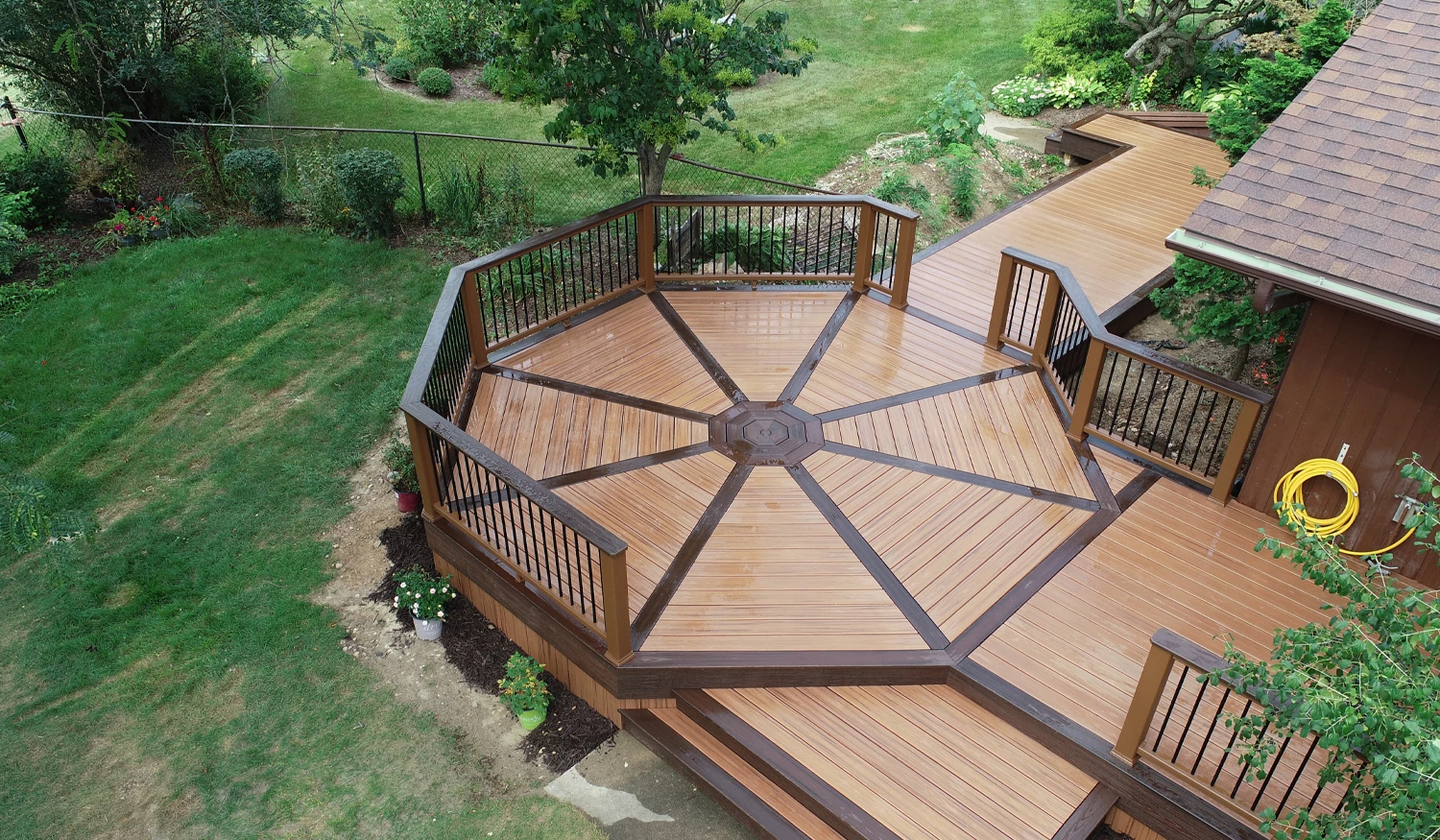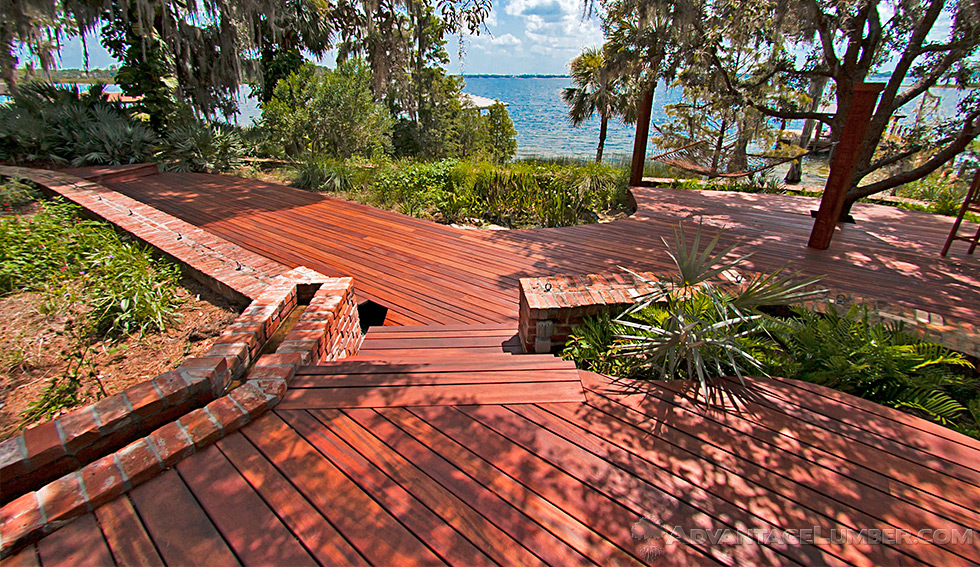How to Pick the Right Products for Your Deck Setup Project
Selecting the suitable materials for your deck setup job can seem overwhelming. There are countless aspects to take into consideration, from longevity and upkeep to aesthetic appeals and environmental effect. The selection in between typical timber and composite products, each with its very own set of advantages and downsides, can be particularly difficult. The trick is to stabilize your budget, layout choices, and lifestyle needs to create a deck that will certainly improve your exterior area for several years to come.
Understanding the Various Sorts Of Deck Products
When starting a deck setup project, the choice of materials becomes a pivotal decision. Various alternatives are readily available, each with one-of-a-kind characteristics and aesthetic appeal. Typical timber, for example, supplies an ageless, all-natural look and is typically more economical. However, it can warp with time and calls for routine upkeep. Composite products, on the various other hand, are a blend of timber and plastic, offering longevity and resistance to weather aspects. They demand less upkeep compared to timber however are normally a lot more expensive. Another alternative is plastic, which is practically maintenance-free and resistant to bugs and rot, albeit less natural-looking. By comprehending these distinctions, house owners can make a much more informed choice on one of the most appropriate deck product for their details requirements.
Reviewing the Resilience and Maintenance Demands of Deck Products
Examining the durability and maintenance demands of deck products is a crucial action in deck installment. Durability entails the material's capability to hold up against rough climate condition, deterioration, and its durability. As an example, cedar and redwood are naturally immune to rot and bugs, making them long lasting selections. On the various other hand, pressure-treated wood, while sturdy, might call for more upkeep due to its sensitivity to fracturing and contorting.
Recognizing maintenance needs is equally important. Some materials require routine securing or tarnishing to maintain their look and withstand dampness damage, while others, like composite outdoor decking, require much less upkeep. By examining these variables, one can select the most appropriate decking material, ensuring a balance between sturdiness, maintenance demands, and aesthetic charm.
Cost Evaluation: Comparing Timber and Compound Decking
Although cost might initially appear like a second issue, it is a considerable factor when contrasting timber and composite decking. Timber, generally a less costly choice, has a reduced ahead of time expense. Over time, maintenance costs can build up, possibly making wood much more costly in the lengthy run. These upkeep prices might consist of staining, sealing, or changing harmed boards. On the other hand, composite outdoor decking, while costlier originally, requires less maintenance, possibly minimizing long-lasting costs. It's important to remember that composite decking isn't impervious to use and tear, and replacement costs can be high. Therefore, possible deck owners must consider their budget plan and readiness to preserve their decks when choosing in between timber and composite decking.
Looks and Design Versatility of Decking Materials
While expense is an essential factor to consider, the visual appeal and design adaptability of outdoor decking materials also play a substantial function in the decision-making process. Different materials provide differing degrees of aesthetic appeal. As an example, all-natural wood outdoor decking supplies a classic, classic look, while composite products supply a wide variety of shades and textures to fit varied tastes and styles. Layout versatility refers to the capacity to shape and manipulate the decking product to meet details layout needs. Wood, as an example, provides high layout flexibility as a result of its simplicity of cutting and forming. Compound products, while less adaptable in layout, are still adaptable enough for most deck designs. These variables, for that reason, are important components in the option of decking material.
Ecological Influence of Decking Materials
When selecting outdoor decking materials, one should think about not only visual appeals and longevity, however likewise the ecological impact. It is very important to examine the sustainability of products and discover recycled decking options. Understanding the potential effect on local ecological communities will certainly ensure a much more ecologically accountable selection.
Evaluating Material Sustainability
In the realm of deck building and construction, examining product sustainability is a critical step. This involves examining the environmental effect of each potential product, considering aspects such as the power required for its manufacturing, its carbon impact, and its end-of-life disposal or reusing choices. For instance, timber is a renewable resource, yet unsustainable logging methods can bring about logging. Alternatively, composite decking materials commonly integrate timber and plastic, minimizing the demand for new timber however increasing reliance on nonrenewable fuel sources. Aluminum and various other steels may be more resilient and recyclable, however their extraction and handling can be energy-intensive. Therefore, the selection of outdoor decking products ought to balance capability, visual appeals, cost, and sustainability to ensure an accountable and long-lasting setup.
Recycled Decking Choices

Compound outdoor decking is specifically preferred due to its durability and ease of maintenance. Recycled plastic decking, on the other hand, is highly resilient and requires minimal upkeep.

Impact on Local Environments
While the advantages of making use of recycled materials for outdoor decking can not check these guys out be overemphasized, it's similarly vital to think about the more comprehensive environmental effects of these choices. The extraction, handling, and transport of materials can profoundly impact regional communities. Deforestation for hardwood outdoor decking adds to habitat loss and environment change. Even the production of composite materials can launch hazardous discharges. Alternatively, using recycled or sustainably sourced materials can assist minimize these effects. Considering the lifespan of materials can decrease environmental effect; longer-lasting choices call for much less constant substitute, hence conserving resources. Finally, correct disposal of old outdoor decking is essential to lessening garbage dump waste (deck installer austin). Basically, an eco-conscious deck job needs cautious material selection, sustainable sourcing, and responsible disposal.
Making Your Decision: Tips for Picking the most effective Deck Materials
As the short article transitions right into the subtopic of "Making Your Decision: Tips for Picking the very best Deck Materials", it is crucial to recognize the range of deck materials readily available. Striking an equilibrium between resilience and aesthetics is essential in this option process. The adhering to discussion will certainly assist readers in making an enlightened option based on these crucial factors to consider.
Comprehending Various Deck Materials
The job of choosing the ideal products for your deck setup can appear daunting because of the substantial range of alternatives available. Nonetheless, understanding the different products can streamline this process. Wood is a prominent selection, providing a traditional visual and affordability. Kinds of timber investigate this site used include pressure-treated lumber, cedar, and redwood. Composite products, made from a mix of timber and plastic, are low-maintenance and resistant to rot and insects. Vinyl or PVC decks are also extra resilient and need much less upkeep than composite materials, however they can look much less all-natural. Aluminum decks are strong, lightweight, and resistant to rot, however they are likewise the most pricey alternative. Each product has its very own advantages and downsides, making it essential to consider your particular requirements prior to making a decision.
Longevity vs. Visual Appeals Balance
Stabilizing longevity with appearances can be an obstacle when choosing deck materials. The decision frequently comes down to individual preferences and the deck's intended usage. High-traffic locations may necessitate sturdy products like composite decking, which withstands deterioration but might do not have the natural beauty of timber. On the other hand, wood supplies an ageless appeal and heat that synthetic materials battle to replicate. It requires extra maintenance and might not last as long. Homeowners require to strike a balance, taking into consideration both the deck's useful needs and their aesthetic choices. By doing so, look at here now they can ensure their deck stays a functional and appealing outdoor area for years to find.
Conclusion
In conclusion, choosing the right materials for your deck installation task calls for mindful factor to consider of aspects such as longevity, upkeep, expense, looks, and ecological effect. Whether you choose for conventional wood or composite products, your selection must line up with your budget, design choices, and lifestyle. Inevitably, the ideal decking material is one that boosts your exterior area and offers satisfaction for several years to find.
Comments on “Planning your outdoor upgrade? Start by hiring the right team for deck installation Austin TX.”